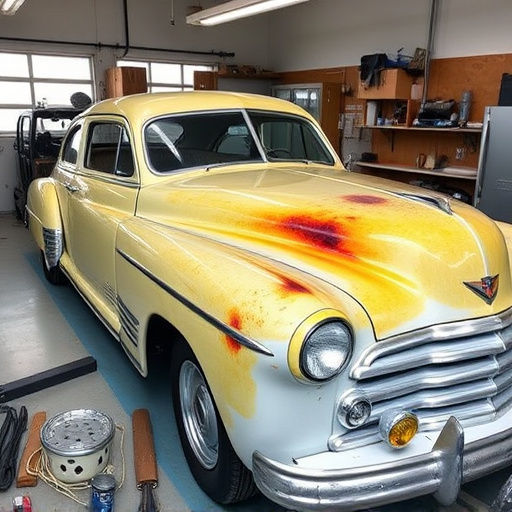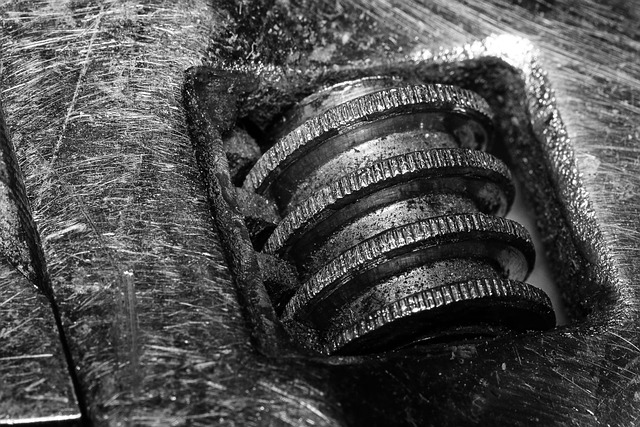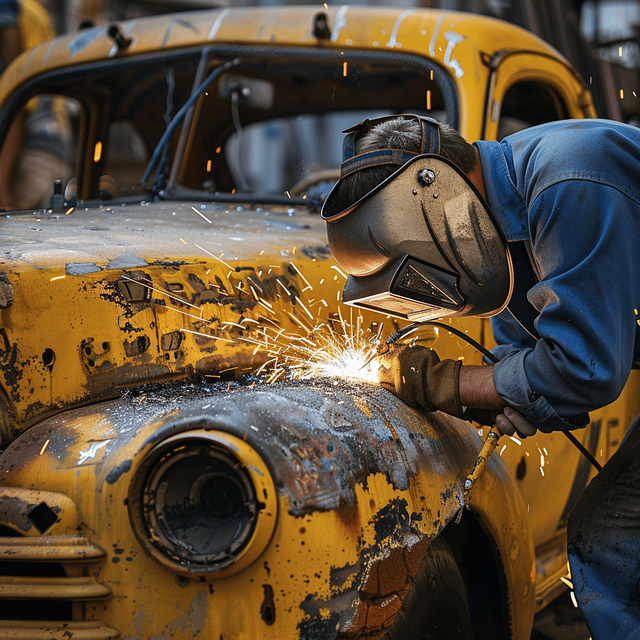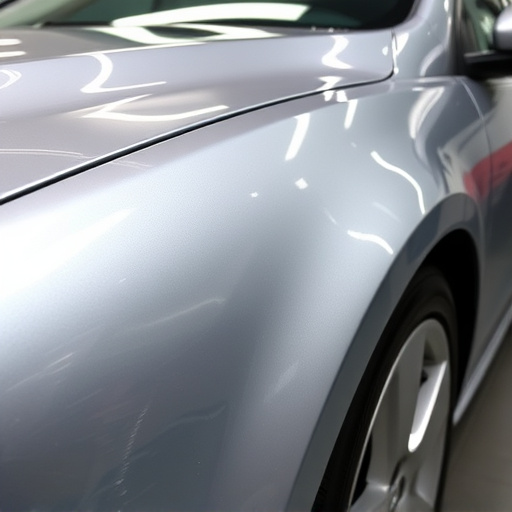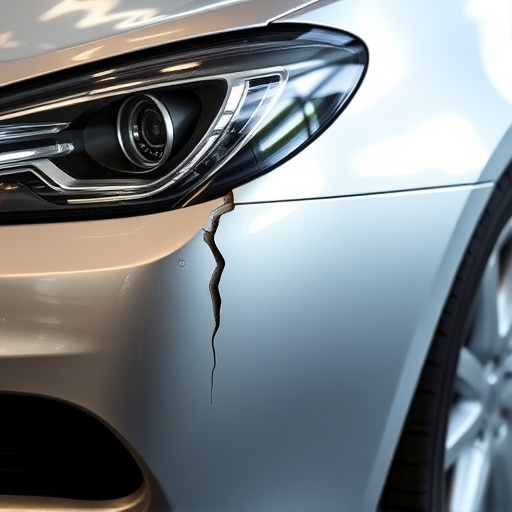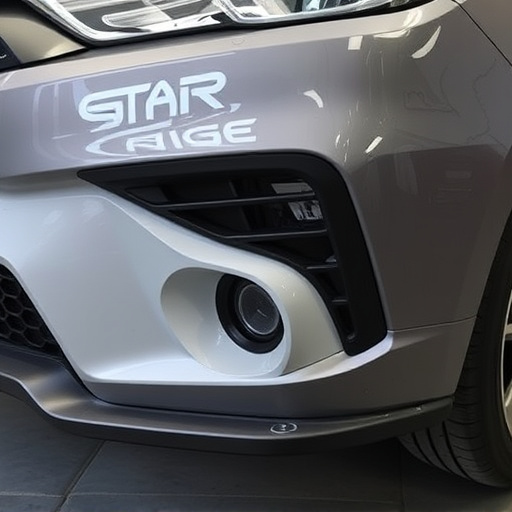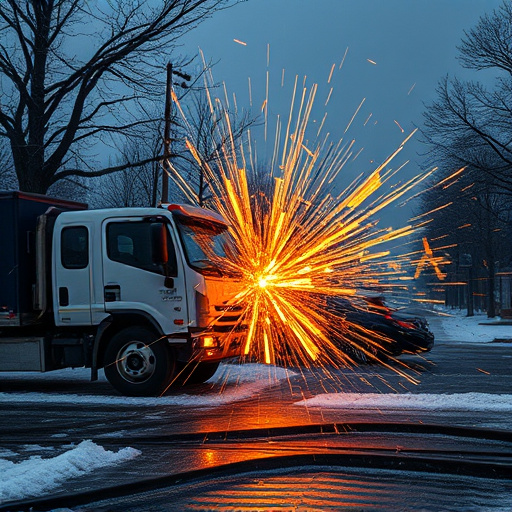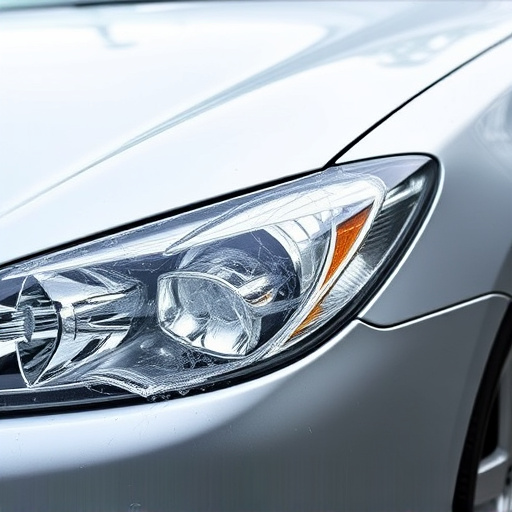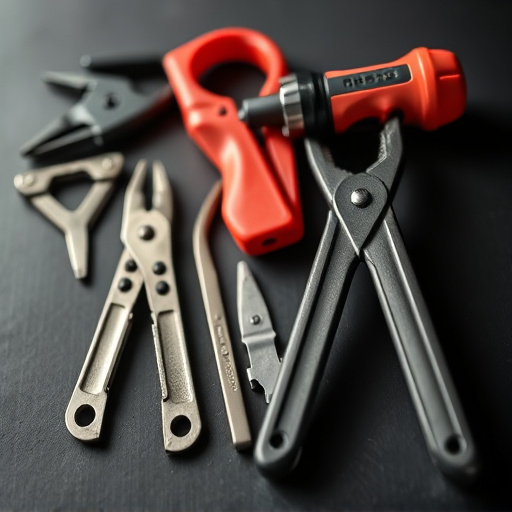Tesla composite repair utilizes advanced materials science to offer lightweight, robust solutions for automotive restoration, enhancing corrosion resistance and structural integrity. This is crucial for maintaining performance, efficiency, and aesthetic appeal of Tesla vehicles. Experienced technicians at reputable collision centers are essential for high-quality repairs that meet stringent standards, using modern techniques and specialized equipment to revive composite parts to original specifications.
Tesla’s adoption of composite materials in performance parts offers significant weight reduction, enhancing efficiency and range. However, repairs present unique challenges due to the complex nature of these advanced materials. This article explores Tesla composite repair techniques that streamline restoration, ensuring structural integrity and aesthetic precision. From understanding composite benefits to addressing common challenges, we provide an in-depth guide on efficient Tesla composite repair methods for optimal performance and longevity.
- Understanding Tesla Composite Materials and Their Benefits
- Common Composite Repair Challenges for Performance Parts
- Advanced Techniques for Efficient Tesla Composite Restoration
Understanding Tesla Composite Materials and Their Benefits

Tesla vehicles are renowned for their cutting-edge technology and innovative design, and this extends to the materials used in their construction. Tesla Composite Repair focuses on understanding and working with advanced composite materials that offer significant advantages over traditional metal bodies. These composites are lightweight yet incredibly strong, allowing for improved vehicle performance and efficiency. By utilizing composite repair techniques, owners can preserve the structural integrity of these high-performance parts while also maintaining the vehicle’s sleek aesthetics.
The benefits of Tesla composite materials in automotive restoration are numerous. They offer superior corrosion resistance, ensuring the vehicle’s exterior remains pristine over time. Unlike metal, composites don’t rust or dent easily, making them ideal for repairing and restoring vehicles without compromising their structural integrity. This is especially valuable for car dent repair or even car paint repair, as the composite material can be seamlessly restored to its original condition.
Common Composite Repair Challenges for Performance Parts
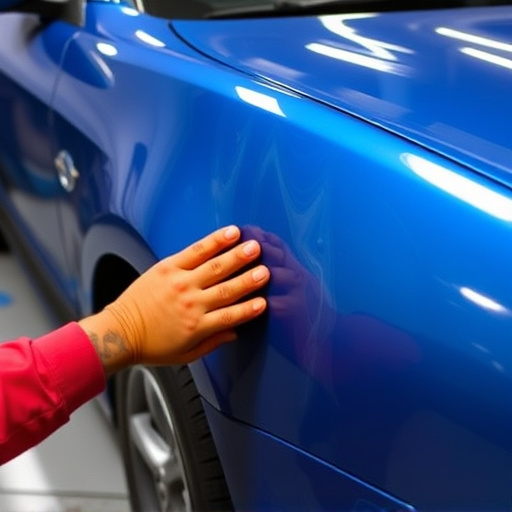
In the realm of Tesla composite repair, particularly for lightweight performance parts, several common challenges arise. One significant hurdle is the intricate nature of these components, which often consist of advanced materials like carbon fiber and fiberglass, requiring precise handling to maintain structural integrity and aesthetic appeal. Missteps in the repair process can lead to visible imperfections such as cracks, bubbles, or uneven finishes—defects that not only compromise the part’s performance but also its market value.
Moreover, performance parts are designed for speed, durability, and enhanced driving dynamics, making their replacement with subpar repairs detrimental. As a result, Tesla composite repair for these specialized components demands meticulous attention to detail, advanced techniques, and specialized tools. Utilizing a reputable collision repair center or auto collision center equipped with experienced technicians is crucial to ensuring that the repaired parts meet the high standards set by both Tesla and performance enthusiasts alike.
Advanced Techniques for Efficient Tesla Composite Restoration
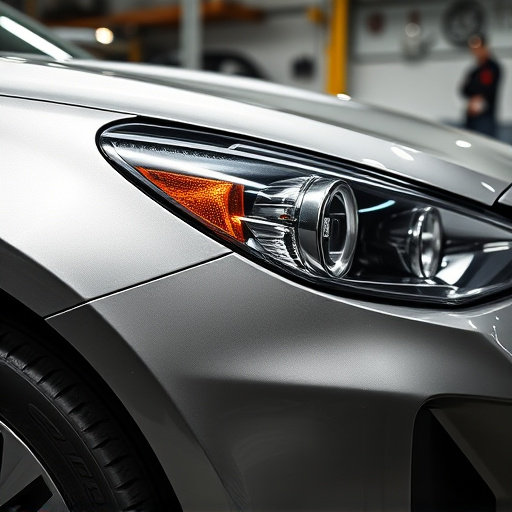
In the realm of Tesla composite repair, advanced techniques have emerged to efficiently restore lightweight performance parts, a key aspect in enhancing vehicle dynamics and fuel efficiency. Modern methods go beyond traditional dent removal, employing sophisticated tools and precise methodologies to meticulously mend complex composite structures. This involves specialized equipment for identifying and addressing internal damage, ensuring structural integrity while preserving the aesthetic appeal of these high-performance components.
For enthusiasts engaging in classic car restoration or seeking top-tier vehicle repair, understanding these advanced techniques is paramount. By combining expertise with cutting-edge tools, professionals can revive Tesla’s composite parts to their original specifications, contributing to optimal performance and a seamless, restored look. This expertise ensures that each repaired part meets the stringent standards required for lightweight materials, ultimately enhancing the overall driving experience.
Tesla composite repair for lightweight performance parts is a cutting-edge solution that leverages advanced techniques to restore and enhance these innovative materials. By understanding the benefits of Tesla’s composite technologies and addressing common repair challenges, professionals can ensure optimal performance and longevity for high-performance vehicles. Efficient composite restoration methods not only save time but also contribute to the overall sustainability of automotive manufacturing, making Tesla composite repair a game-changer in the industry.
